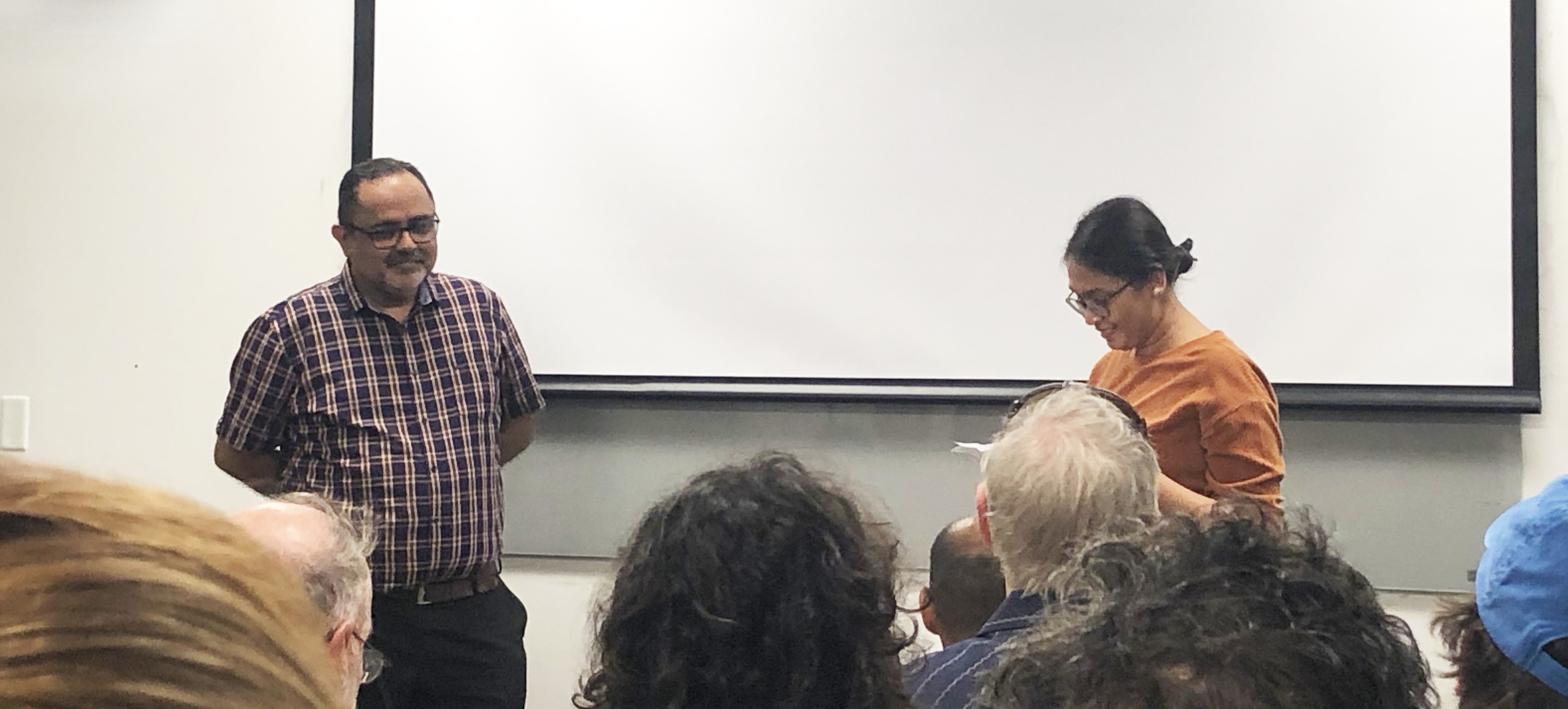Author: Arushi Sahai
PhD Student in History of Art and Architecture
Homes are machines that we live in.
Last month, the Department of History of Art and Architecture co-sponsored a screening and discussion with director Avijit Mukul Kishore about his documentary, Nostalgia for the Future. The film tells the story of Indian modernity through the lens of domestic architecture, exploring the bonds and ideals of the ambitious postcolonial nation and its citizens. Using four examples, the film shows how the newly-independent nation would weave a new narrative of progress and development using the idealized concept of the home.
The film opens in 1890 focusing on the architectural language of the time by looking at Lukhshmi Vilas Palace in Baroda, the largest domestic architecture in India and a leading example of modernity in its time. The European statues and fountains which adorned the interiors of the house evoked progress and status for educated class of colonial India. The definition changed in the 1950s, where the film opens its second act. The first decade of postcolonial India reflects the vision of a new nation-state as was projected by its leader, the first Prime Minister of India, Jawaharlal Nehru. Nehru believed in a country liberated from history: to be modern was to be new. This ideology manifested in the conception of Chandigarh – the first ‘planned’ city in India designed by Swiss-French architect Le Corbusier. Nehru ardently believed that by living in modern architecture the citizens of India would become modern. The modern had to be made of steel, concrete and sans history. The third chapter explores public housing in Delhi which was designed by the Indian government with the intention of housing refugees from Pakistan as well as bureaucrats. Designed to promote the nuclear family, the houses had a set floor plan of a living room, bedroom, kitchen and toilet: a set mechanical production of domestic space for new India. The film concludes with the present-day Gurugram where high towering domestic apartments juxtapose makeshift slums which together make the city’s landscape. Through these four places and times, Kishore weaves parallels of architectural history within broader cultural histories to elaborate on India’s aspirations for modernity and its projection on to its people.
An invigorating Q&A session followed the film screening where students from various departments joined the director to reflect on the film. The questions addressed a range of medium concerns including Kishore’s mixing of poetic black-white film and digital video with found footage from state propaganda films and mainstream features. Others addressed his use of unadulterated Hindi (rather than the more colloquial Hindustani) for narration. The Q&A session proved to be enlightening by highlighting the use of filmmaking as a medium to reflect on architecture. Through Kishore’s confluence of mediums including those originally used as propaganda, the film shows how architecture has been embedded in a various media and social worlds.

